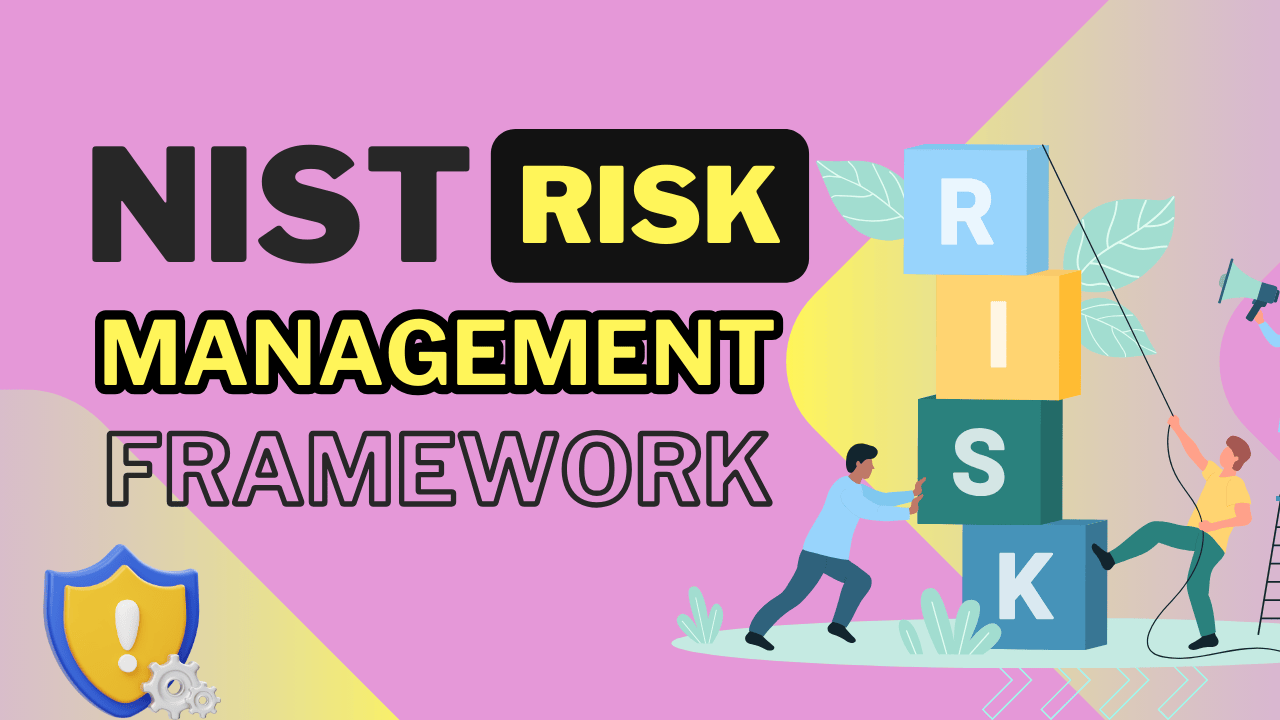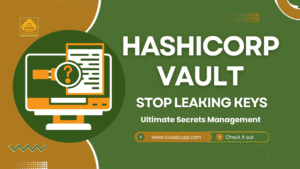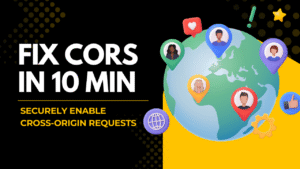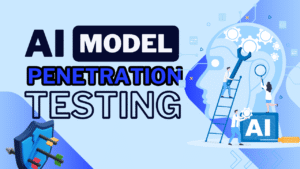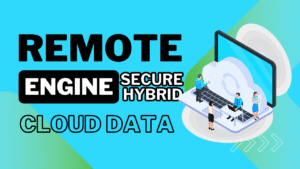Key Takeaways:
- Trustworthy AI Essentials: NIST outlines 7 key characteristics like validity, safety, security, explainability, privacy, fairness, and accountability to build reliable AI systems.
- Four Core Functions: The framework’s heart includes Govern (set policies), Map (define context and goals), Measure (analyze risks), and Manage (prioritize and respond) for ongoing improvement.
- Real-World Analogies: Compare AI governance to running a family business, mapping risks to planning a road trip, and managing to gardening for easy understanding.
- Practical Tips: Use checklists for evaluation, involve diverse teams in profiles, and blend quantitative/qualitative measurements to avoid false precision.
- Customization with Profiles: Tailor the framework via profiles for specific use cases, environments, or implementations to make it fit unique needs.
On This Page
Table of Contents
Artificial intelligence, or AI, is changing our world in ways we could only dream about a few years ago. Imagine a doctor using AI to spot cancer early in a scan, or a bank relying on it to detect fraud before it hits your account. From healthcare to finance and even national security, AI brings speed, smart insights, and efficiency that humans alone can’t match.
But here’s the catch: with all this power, there’s a real chance things could go sideways. What if an AI system unfairly denies someone a loan because of hidden biases? Or what if hackers tamper with it, leading to dangerous decisions? That’s where managing risks becomes crucial. We need a solid plan to keep the good stuff coming while dodging the pitfalls.
Enter the AI Risk Management Framework from the US National Institute of Standards and Technology, or NIST. Think of it as a roadmap for building and using AI that’s safe, fair, and reliable. It’s not some dusty rulebook—it’s a practical guide to balance the rewards of AI with its risks. In this article, we’ll break it down step by step, like a friendly chat over coffee. By the end, you’ll see how this framework can help anyone—from tech teams to everyday users—master AI risks.
Why Trust Matters in AI
Before diving into the framework, let’s talk about what makes AI trustworthy. You wouldn’t hand your car keys to a stranger without knowing they’re a safe driver, right? Same with AI: we need to know it’s dependable. NIST outlines key characteristics that build this trust. These aren’t optional extras; they’re the foundation for any AI system worth using.
Here’s a quick rundown in bullet points for clarity:
- Valid and Reliable: The AI must give accurate results consistently. If it’s spitting out wrong info, like a weather app predicting sun during a storm, trust evaporates fast.
- Safe: It shouldn’t harm people, property, or the environment. Picture an autonomous car that swerves to avoid a pothole but endangers pedestrians—that’s a safety fail.
- Secure and Resilient: AI holds valuable data, so it must withstand attacks. Hackers might try to “poison” the system with bad data, making it unreliable, or steal sensitive info.
- Explainable and Interpretable: We need to understand why the AI made a decision. For instance, if an AI denies a job application, a HR expert should be able to see the reasoning without needing a PhD in coding.
- Privacy-Enhancing: It protects personal data like a vault. Sharing secrets without permission? That’s a no-go, just like blabbing a friend’s confidential story online.
- Fair: No biases against groups based on race, gender, or anything else. Biased AI could lead to unfair hiring, amplifying real-world inequalities.
- Accountable and Transparent: No black boxes here—we must peek inside to see how it works, holding creators responsible.
To visualize these, let’s use a table comparing trustworthy AI to everyday trust in people:
| Characteristic | AI Example | Real-World Analogy |
|---|---|---|
| Valid and Reliable | AI diagnosing diseases correctly 90% of the time | A reliable friend who always shows up on time |
| Safe | Self-driving car avoiding accidents | A babysitter who keeps kids out of harm’s way |
| Secure and Resilient | AI resisting cyberattacks | A home alarm system that works even during a storm |
| Explainable | AI explaining loan rejection reasons | A teacher showing how they graded your test |
| Privacy-Enhancing | AI anonymizing user data | A confidant who never gossips |
| Fair | AI treating all applicants equally | A referee calling fair plays in a game |
| Accountable | Logs showing AI decision trails | A manager owning up to team mistakes |
These traits aren’t just nice-to-haves. Without them, AI can amplify problems. Take the real-world example of facial recognition software: some systems have been biased against people of color, leading to wrongful arrests. NIST’s framework aims to fix that by embedding these qualities from the start.
“Trustworthy AI systems are valid and reliable, safe, secure and resilient, accountable and transparent, explainable and interpretable, privacy-enhanced, and fair with harmful bias managed.”
— NIST AI Risk Management Framework (Version 1.0, 2023)
Tip: When evaluating an AI tool for your business, start with a checklist based on these characteristics. Ask: “Is this AI explainable? Does it protect privacy?” It could save you from headaches down the line.
The Core of the Framework: Four Key Functions
At the heart of NIST’s AI Risk Management Framework is a “core” made up of four functions: Govern, Map, Measure, and Manage. Think of it like building a house. Govern sets the blueprint and rules; Map surveys the land and plans; Measure checks if everything’s level; and Manage fixes issues and maintains it. These functions create a loop of ongoing improvement, ensuring AI stays trustworthy as it evolves.
Govern: Setting the Tone from the Top
Govern is the starting point—it’s about creating a culture of responsibility. This function cuts across everything else, like the roots of a tree supporting all branches. Here, organizations define how they’ll handle AI, from ethical guidelines to compliance with laws.
Key aspects include:
- Establishing policies: What values guide your AI use? For example, a hospital might prioritize patient safety above all.
- Ensuring compliance: Follow regulations like GDPR for data privacy or industry-specific rules.
- Building a risk-aware culture: Train teams to spot issues early.
Governing AI is like running a family business. You set house rules (no shortcuts on quality) that everyone follows, ensuring the business thrives without scandals.
In practice, a tech company might create an AI ethics board under Govern. This board reviews projects to align with company values, preventing mishaps like biased algorithms in hiring tools.
Tip: Start small—hold a workshop with your team to brainstorm AI governance policies. It fosters buy-in and uncovers blind spots.
Map: Understanding the Big Picture
Next up is Map, where you set the context for your AI system. AI involves many players: developers, users, regulators, and even end beneficiaries. Without a clear map, it’s like navigating a city without GPS—confusing and risky.
This function focuses on:
- Defining stakeholders: Who builds the AI? Who uses it? For a chatbot in customer service, stakeholders include coders, support staff, and customers.
- Goal setting: What should the AI achieve? Clear goals help measure success later.
- Assessing risk tolerance: Some organizations (like startups) might accept higher risks for innovation, while banks prefer caution.
- Identifying risks early: Look at how actors might introduce biases or errors.
Example: In autonomous vehicles, mapping involves charting everyone from engineers to traffic regulators. A low risk tolerance means prioritizing safety over speed.
To make it concrete, here’s a bulleted checklist for mapping in a simple AI project, like a recommendation engine for an online store:
- List stakeholders: Developers, marketers, customers.
- Set goals: Increase sales by 20% without spamming users.
- Evaluate risks: Potential for recommending biased products based on user data.
- Define tolerance: Accept minor glitches but zero tolerance for privacy breaches.
Measure: Quantifying and Analyzing Risks
Now we get to Measure, the detective work of the framework. Here, you use tools to gauge risks, much like a doctor running tests to diagnose issues.
Approaches include:
- Quantitative analysis: Numbers-driven, like calculating error rates (e.g., 5% bias in predictions).
- Qualitative analysis: High/medium/low ratings for subjective risks, like “high” for potential privacy leaks.
- Testing and validation: Run simulations across the AI lifecycle, from development to deployment.
- Tools for evaluation: Use metrics to check if goals are met.
Be cautious—numbers can mislead if not contextualized. A combo of quant and qual often works best.
In healthcare AI for predicting patient outcomes, measure bias by testing on diverse datasets. If it performs poorly for certain ethnic groups, flag it as a high risk.
Table for measurement methods:
| Method Type | Pros | Cons | Example Use Case |
|---|---|---|---|
| Quantitative | Precise, data-backed | Can give false precision | Calculating AI accuracy percentage |
| Qualitative | Flexible, easy to understand | Subjective interpretations | Rating bias as “high” in hiring AI |
| Testing/Validation | Comprehensive coverage | Time-consuming | Simulating cyberattacks on AI |
Tip: Use open-source tools like scikit-learn in Python for quantitative measures. For instance, compute fairness metrics to spot biases early.
“Measurement approaches should be selected based on the context of use, including the AI system’s goals, potential risks, and available resources.”
— Adapted from NIST Guidelines on AI Measurement (2023)
Manage: Responding and Improving
Finally, Manage ties it all together. You revisit goals, prioritize risks, and decide how to handle them. It’s the action phase—fix what’s broken and keep improving.
Steps include:
- Re-examine goals: Did we hit them? Adjust if needed.
- Prioritize risks: Rank by impact, like focusing on safety over minor inefficiencies.
- Respond to risks: Mitigate (add safeguards), accept (if low impact), transfer (outsource), or avoid altogether.
- Foster continuous improvement: Create a feedback loop.
Example: A social media platform manages risks by mitigating deepfake content through AI detection tools, accepting some false positives, and transferring liability via insurance.
The four functions form a cycle: Govern influences all, Map feeds into Measure, which informs Manage, looping back for better AI.
“Effective risk management requires ongoing monitoring and adaptation to emerging risks in AI systems.”
— Insights from NIST AI RMF Playbook (2024 Update)
Profiles: Tailoring the Framework to Your Needs
Once the core is in place, NIST suggests creating profiles. These are customized versions of the framework for specific scenarios. Like outfits for different occasions—you wouldn’t wear a suit to the beach.
Profiles detail:
- Use-case specifics: A profile for medical AI might emphasize privacy and safety.
- Environment adaptations: Adjust for cloud vs. on-premise setups.
- Multiple versions: One for development, another for deployment.
Example: A finance firm creates a profile for fraud detection AI, focusing on high security and low bias tolerance.
Tip: When building profiles, involve diverse teams to catch unique risks. It leads to more robust AI.
WrapUP: Building a Trustworthy AI Future
NIST’s AI Risk Management Framework provides a clear, flexible path to trustworthy systems. By focusing on characteristics like safety and fairness, and cycling through Govern, Map, Measure, and Manage, we can harness AI’s power without the pitfalls. Whether you’re a developer tweaking algorithms or a manager overseeing projects, this framework empowers you to build AI that benefits everyone.
Remember, it’s about continuous effort, like maintaining a healthy lifestyle rather than a one-time diet. With real-world examples from healthcare biases to secure autonomous cars, and tools like checklists and simple codes, we’ve seen how approachable this can be.

FAQs
What exactly is the NIST AI Risk Management Framework?
It’s a helpful guide created by the U.S. National Institute of Standards and Technology to deal with the ups and downs of using AI. Think of it as a step-by-step plan to spot, check, and fix potential problems in AI systems, so they stay useful without causing harm. It’s not a strict set of rules but more like flexible advice for teams building or using AI.
Why do we even need something like this for AI?
AI can do amazing things, like speeding up work or giving smart advice, but it can also mess up—like spreading unfair biases or getting hacked. This framework helps keep things balanced, making sure AI is safe, fair, and trustworthy. Without it, small issues could turn into big headaches, like wrong medical advice or privacy leaks.
What makes an AI system “trustworthy” according to NIST?
NIST says a good AI should tick several boxes: it has to be accurate and dependable, safe for people and the planet, tough against attacks, easy to understand (no mystery decisions), protective of personal info, unbiased toward anyone, and open about how it works. It’s like checking if a new gadget is reliable before you buy it.
How is this different from just regular risk management?
Regular risk management might focus on things like money or projects, but this one is tailored for AI’s unique quirks, like explaining weird decisions or handling massive data. It’s more about building trust in tech that’s always changing, with a focus on ethics and fairness.
Who should use this framework?
Anyone dealing with AI! That includes developers creating the tech, businesses using it in apps, governments setting policies, or even everyday folks curious about safe AI. It’s great for big companies or small teams wanting to avoid mistakes.
Is it hard to put this framework into action?
Not really—start small. Pick one AI project, go through the four steps, and create a custom “profile” for your needs. Use simple checklists or team chats to make it easier. Over time, it becomes a habit, like routine car maintenance to prevent breakdowns.
What if my organization already has AI rules in place?
That’s awesome! You can blend this framework with what you have. It plays well with other standards, like privacy laws or industry guidelines, to fill in gaps and make your setup even stronger.
